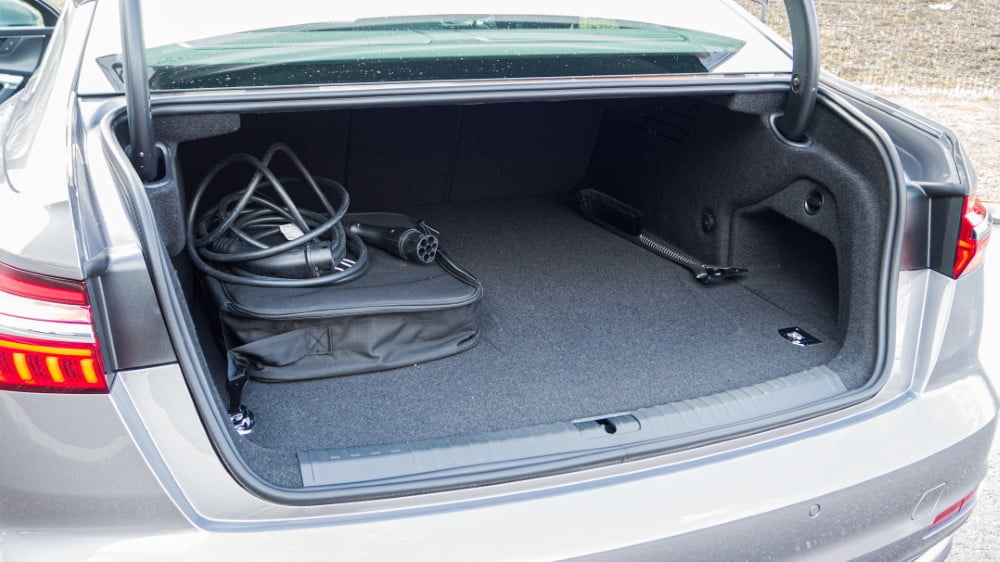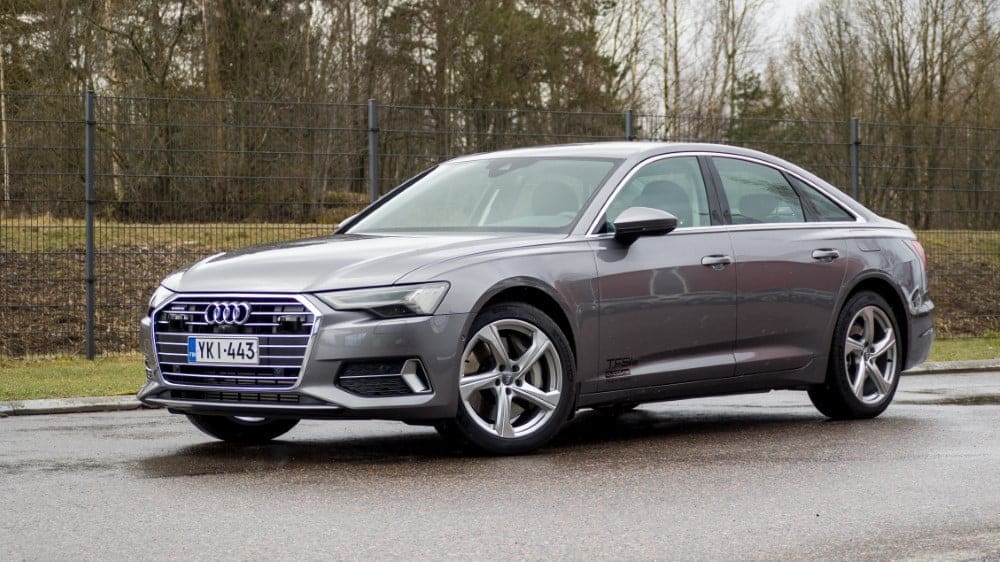Sitting in the new A6, you might be surprised how similar the interior space is to its sporty big brother, the A7. The eye is drawn to the two large screens on the dashboard and the otherwise very straightforward design.
The design language is simple and angular. The glossy metal and plastic surfaces are familiar from other Audi models.

The large sedan offers good space
Inside, the A6 is a good size. The doors are large and practicality is a priority. Practicality has been thought through, especially in the design of the boot.
In many brands, the design of the boot in hybrid models is poorly executed. In most cases, when the batteries are placed on the rear axle, this is reflected in the boot in an odd design. The floor of the boot may be stepped, partially sloping or otherwise impractical. In the Audi A6, the boot floor is straight.
The boot capacity of this plug-in hybrid is 360 litres. The boot feels considerably larger than its litres. The A6 with an internal combustion engine alone has a boot capacity of 530 litres.
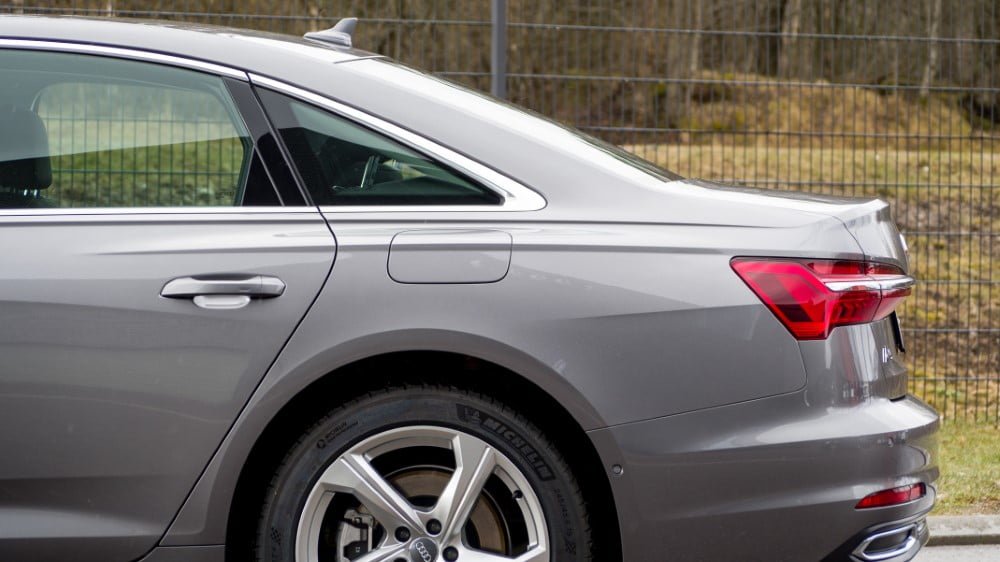
In terms of exterior design, the new A6 is a very familiar Audi. At the same time, the A6 has become more compact, and the design language is now even closer to its big brother, the A8 – in a slightly smaller size.
The rear mudguard has been given an extra bulge, giving the rear end a more powerful look.
In terms of exterior and interior dimensions, the A6 is almost identical to the A7. The A7 is larger on the outside, while the A6 takes the lead on the inside. The difference in size, however, remains within a few centimetres.

Excellent range with electricity
In addition to the two-litre petrol engine, the A6 TFSI e is powered by a 105 kW electric motor. The electric motor is powered by a 14.1 kWh lithium-ion battery.
The reported electricity consumption is generally subject to the same error as the reported fuel consumption. The test results are almost impossible to achieve with cars. There are also differences between brands in how much the reported figures differ from reality.
The range of electric driving was a positive surprise for the A6. Audi promises an operating range of 55 kilometres according to the WLTP measurement.
With a fully charged battery, a whopping 43 kilometres were achieved in mixed driving. This included about 15 kilometres on the highway and the rest in city driving. Electricity consumption was 22.5 kWh/100 km and the average speed was 37 km/h.
With a thankfully large 55-litre fuel tank, it can also go the extra distance when the batteries are depleted.
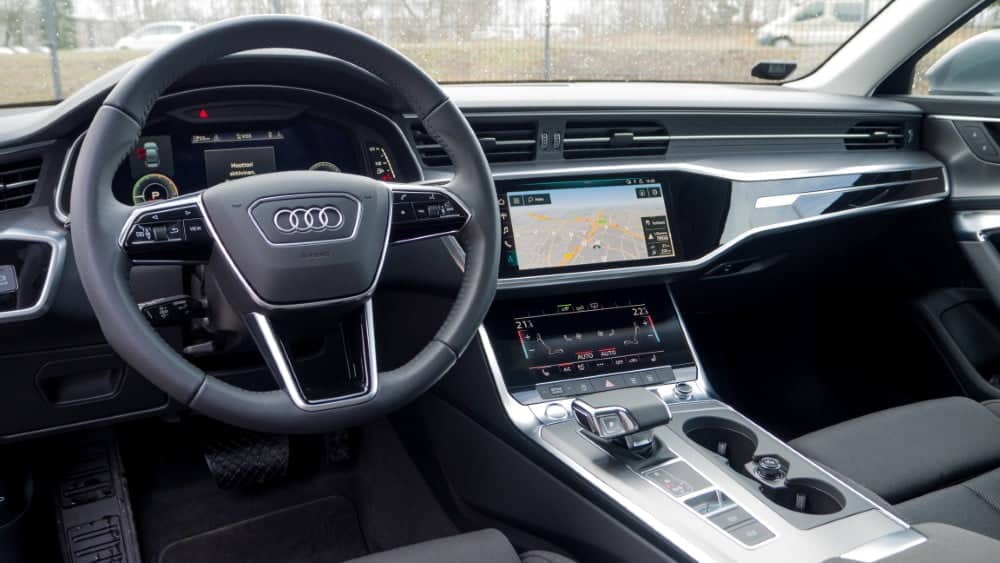
Drivability is the Achilles’ heel
Audi seems to have trouble differentiating between the drivability of the models when comparing the base models. The models are very similar to each other, and there are woefully few differences in driveability and feel.
In the case of the A6, there is nothing wrong with the handling per se, but the personality is lacking. The steering and pedal feel is light, which makes driving easy. The chassis is made to be snappy, and with a curb weight of no less than 2,085 kilos, it’s stable.

Despite a curb weight of more than 2,000 kilos, the ride quality is good, even if the numbers don’t show it directly.
The petrol and electric engines combine for 252 horsepower and a maximum combined torque of 370 Nm. Quattro four-wheel drive and a snappy chassis ensure that the power is transmitted directly to the road.
As a package, this model is sure to appeal to business and private drivers alike. The benefits include a slightly more luxurious and spacious interior. The exterior styling and looks challenge its big brother, the A8.
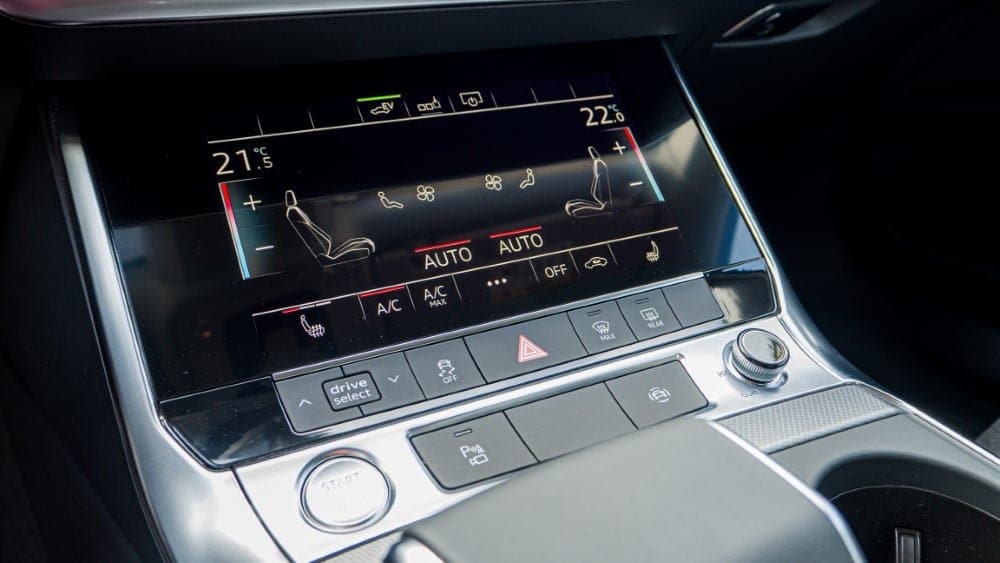
Audi A6 50 TFSI e quattro S tronic
- Engine: 1984 cm³, 4-cylinder
- Combustion engine power: 252 hp @ 5000-6000 rpm.
- Combustion engine torque: 370 Nm @ 1600-4500 rpm.
- Electric motor power: 105 kW
- Electric motor torque: 350 Nm.
- Maximum power (petrol-electric): 220 kW, 299 hp.
- Maximum torque (petrol electric): 450 Nm.
- Acceleration: 6.2 sec (0-100 km/h)
- Combined consumption: 2.1-1.4 l/100km.
- Driving battery capacity: 14.1 kWh
- CO2 emissions: 47-32 g/km.
- Kerb weight: 2085 kg.
- Drive mode: four-wheel drive
- Luggage compartment: 360 l.
- Towing capacity: 2000 kg (with brakes)
- Starting price: €64 900
- Price for test drive: €72 217
